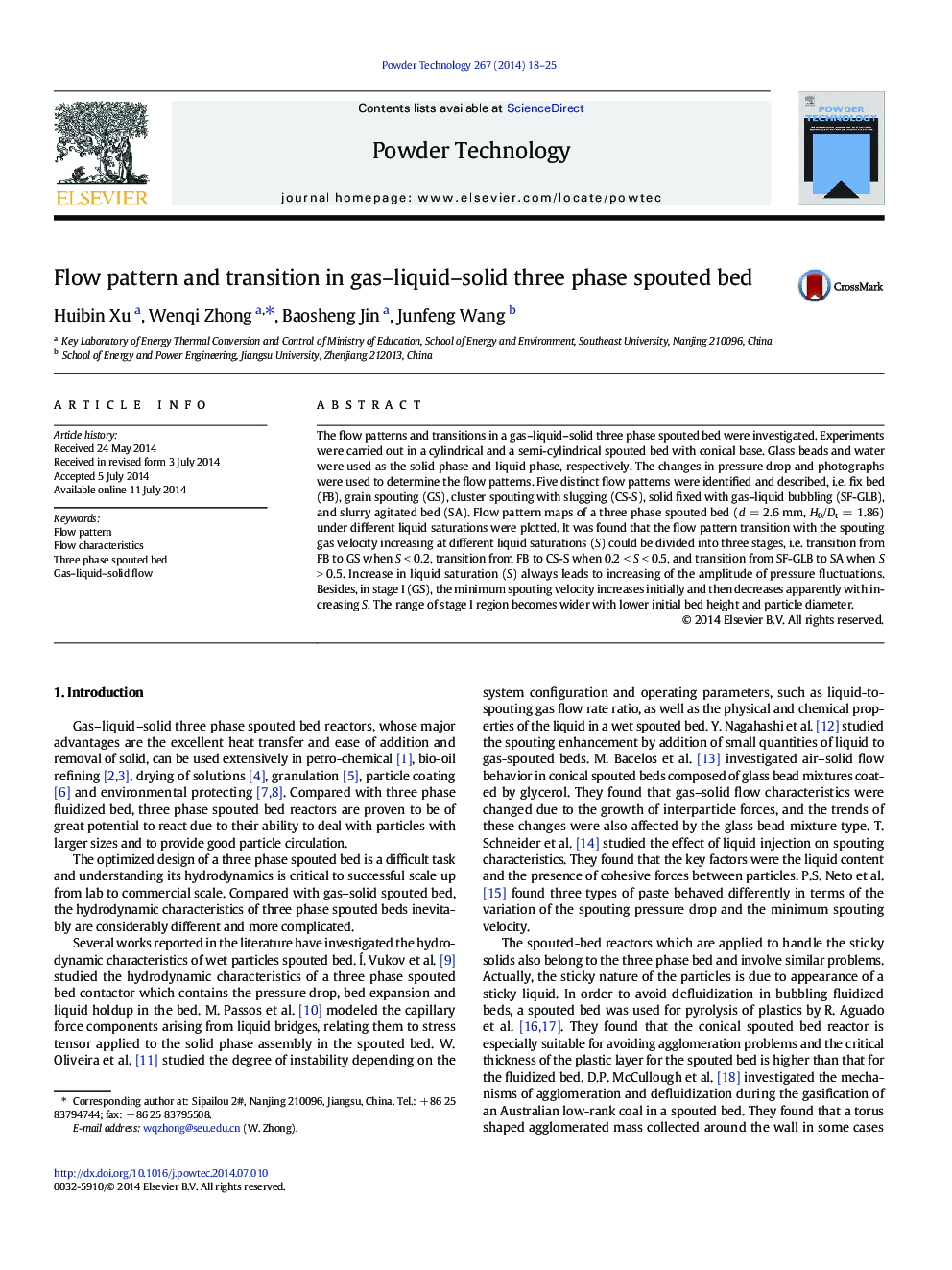| Article ID | Journal | Published Year | Pages | File Type |
|---|---|---|---|---|
| 235993 | Powder Technology | 2014 | 8 Pages |
•Gas–liquid–solid three phase spouted bed were established.•Five distinct flow patterns were identified and described.•The pressure fluctuation amplitude value is higher for higher saturation level.•Flow pattern maps under different operating conditions were plotted.•The grain spouting region is wider for lower bed height and particle diameter.
The flow patterns and transitions in a gas–liquid–solid three phase spouted bed were investigated. Experiments were carried out in a cylindrical and a semi-cylindrical spouted bed with conical base. Glass beads and water were used as the solid phase and liquid phase, respectively. The changes in pressure drop and photographs were used to determine the flow patterns. Five distinct flow patterns were identified and described, i.e. fix bed (FB), grain spouting (GS), cluster spouting with slugging (CS-S), solid fixed with gas–liquid bubbling (SF-GLB), and slurry agitated bed (SA). Flow pattern maps of a three phase spouted bed (d = 2.6 mm, H0/Dt = 1.86) under different liquid saturations were plotted. It was found that the flow pattern transition with the spouting gas velocity increasing at different liquid saturations (S) could be divided into three stages, i.e. transition from FB to GS when S < 0.2, transition from FB to CS-S when 0.2 < S < 0.5, and transition from SF-GLB to SA when S > 0.5. Increase in liquid saturation (S) always leads to increasing of the amplitude of pressure fluctuations. Besides, in stage I (GS), the minimum spouting velocity increases initially and then decreases apparently with increasing S. The range of stage I region becomes wider with lower initial bed height and particle diameter.
Graphic abstractTypical flow pattern map at various spouting gas flow rates under different liquid saturations conditions (d = 2.6 mm, H0/Dt = 1.86).Figure optionsDownload full-size imageDownload as PowerPoint slide
